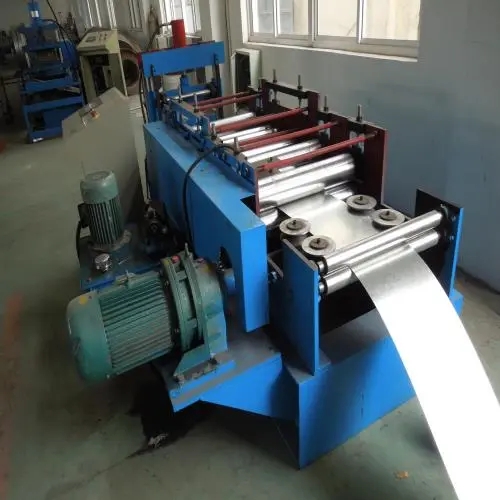
Coil Cutting to Length An Overview
Coil cutting to length is a crucial operation in various manufacturing processes, particularly in the metalworking and sheet metal industries. This technique involves cutting long coils of material, such as steel, aluminum, or copper, into shorter, more manageable lengths. The products created through this method are typically used in automotive, construction, aerospace, and appliance sectors, among others.
The Process of Coil Cutting to Length
The coil cutting to length process begins with large coils of material, which are usually produced in mills. These coils are unwound and fed through a cutting line, where they go through several stages before being cut to the desired length. The primary stages of the cutting line include uncoiling, leveling, and cutting.
1. Uncoiling The coiling machine unwinds the long roll of material, carefully feeding it into the leveling machine. This step is critical to ensure that the material remains flat and free from any kinks or distortions.
2. Leveling As the material travels through the leveling machine, it is subjected to a series of rollers that flatten it. This step is necessary because coils can often be warped or have residual stresses from the coiling process. Leveling guarantees a uniform thickness and surface quality, which is essential for further processing.
3. Cutting After leveling, the sheet progresses to the cutting station. The cutting method can vary; the two most common techniques are shearing and saw cutting. Shearing machines provide clean cuts at high speeds, making them suitable for large volumes of material. On the other hand, saw cutting offers more flexibility, particularly for harder metals or thicker materials where precision is paramount.
4. Stacking and Inspection Once the material is cut into the desired lengths, it is stacked and prepared for inspection. Quality control is integral at this stage, ensuring that the cut pieces meet specification requirements such as length tolerance, edge quality, and surface finish.

Benefits of Coil Cutting to Length
Investing in coil cutting to length systems provides numerous advantages for manufacturers
- Efficiency Automated cutting lines can significantly increase productivity. Machines can operate continuously, leading to higher output rates compared to manual cutting processes.
- Cost-Effectiveness By optimizing material usage and minimizing waste, companies can reduce costs. Precise cutting ensures that every piece meets specifications, limiting scrap and rework needs.
- Versatility Coil cutting to length can handle a wide range of materials and thicknesses, accommodating the specific needs of different industries. This flexibility makes it an invaluable asset for manufacturers looking to diversify their offerings.
- Quality Control The structured process involved in coil cutting allows for better monitoring and quality assurance, resulting in products of consistent quality that meet the rigorous demands of various applications.
Conclusion
Coil cutting to length is an essential operation in the manufacturing landscape. It streamlines the process of transforming large coils of material into usable parts, ensuring high efficiency, cost-effectiveness, and excellent quality. As industries continue to evolve and demand more precision and versatility, the importance of efficient coil cutting systems will only grow. Companies that invest in advanced cutting technologies stand to gain a competitive edge, positioning themselves as leaders in the dynamic manufacturing sector.